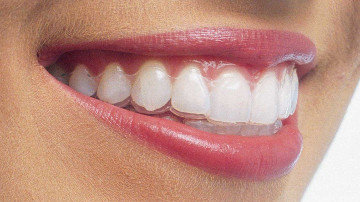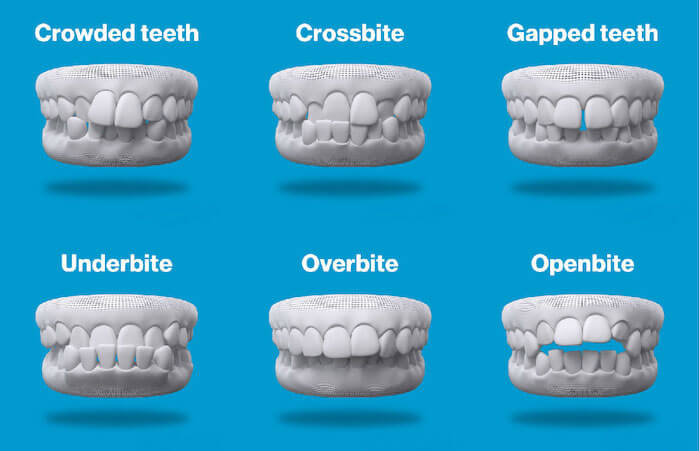How Invisalign Works: Your Guide to Clear Aligners and Their Effectiveness
How Invisalign Works: Your Guide to Clear Aligners and Their Effectiveness
Blog Article
Invisalign vs. Traditional Dental braces: Which Alternative Is Right for You?
When considering orthodontic therapy, the selection between Invisalign and conventional braces presents several vital variables that merit cautious analysis. Invisalign uses a very discreet choice with detachable aligners, while standard braces supply an extra visible yet reliable service for serious misalignment. Each choice encompasses distinct benefits and downsides connected to looks, comfort, therapy period, and expense. Recognizing these subtleties is critical for making an informed choice that straightens with your individual preferences and way of living. The question stays: which choice will finest fulfill your orthodontic needs and expectations?
Overview of Treatment Alternatives

On the other hand, typical dental braces are composed of metal brackets and cords that are adhered to the teeth. This technique applies continuous pressure gradually to achieve alignment. While effective for complex orthodontic issues, standard dental braces require routine sees for changes and can posture obstacles in maintaining dental health as a result of the problem of cleansing around cables and brackets.
Both options have their qualities, and the choice usually pivots on specific dental problems, way of living preferences, and person compliance. Inevitably, speaking with an orthodontic professional is crucial for figuring out the most appropriate treatment strategy tailored to private demands. Comprehending the nuances of each choice can significantly affect the overall success of orthodontic treatment.
Visual Considerations
A substantial variable affecting the selection in between Invisalign and conventional braces is the visual allure each therapy uses. Invisalign aligners are crafted from clear plastic, making them essentially undetectable when used.
In contrast, traditional dental braces include steel brackets and wires, which can be extra visible. While improvements in orthodontic innovation have actually caused the advancement of smaller braces and colored elastics, typical braces still keep a more conspicuous account. For some individuals, the presence of dental braces might deter them from seeking required therapy.
Inevitably, the selection in between Invisalign and standard dental braces may rest on individual preferences pertaining to appearances. Clients that prioritize discretion frequently lean towards Invisalign, while those who are less concerned concerning visibility may choose traditional braces. Recognizing the aesthetic ramifications of each alternative is essential for making an educated decision that lines up with one's way of life and choices.
Convenience and Convenience

In terms of ease, Invisalign aligners are removable, enabling clients to enjoy their favored foods without constraint and preserve Read More Here optimal oral health. Brushing and flossing are simplified, as the aligners can be secured during these routines, whereas conventional braces need cautious steering around cords and braces.
In comparison, conventional braces require normal adjustments, making them less convenient for those with active routines. Overall, the comfort and comfort of Invisalign make it an appealing choice for lots of people seeking orthodontic therapy.
Treatment Period and Efficiency
While both Invisalign and conventional braces are effective in correcting dental misalignments, the period of therapy can differ considerably in between the two choices. Typically, Invisalign therapy can take anywhere from 12 to 18 months, depending on the intricacy of the instance. The clear aligners work by progressively changing teeth right into their wanted positions, and regular follow-ups with an orthodontist help make sure progress continues to be on course.
In comparison, standard dental braces often call for a longer dedication, usually ranging from 18 months to three years. This is due to their set nature and the use of brackets and cords, which can be a lot more effective for serious misalignments and complex instances (Invisalign). The treatment effectiveness of conventional braces is well-documented, as they allow for precise changes and better control over tooth activity
Eventually, the option between Invisalign and traditional braces might pivot on both the anticipated therapy period and the particular oral concerns handy. Consulting with an orthodontist is essential, as they can supply tailored referrals based upon specific demands, guaranteeing the chosen approach straightens with preferred outcomes and durations.
Expense Comparison and Insurance Policy Choices
Cost plays a substantial function in the decision-making process for people thinking about orthodontic therapy, whether choosing for Invisalign or conventional dental braces. On standard, the cost of Invisalign arrays from $3,000 to $8,000, while standard braces commonly cost between $2,000 and $6,000. Aspects influencing these prices include the intricacy of the situation, the period of therapy, and geographical area.
Numerous oral insurance plans supply partial insurance coverage for orthodontic treatments, yet the specifics can vary extensively. Typically, traditional braces may be a lot more regularly covered by insurance coverage plans contrasted to Invisalign, which some insurance firms classify as an aesthetic procedure.
Furthermore, a number of orthodontic methods provide adaptable settlement plans, making both treatment choices extra easily accessible. Individuals ought to ask about prospective financing choices and discount rates for upfront repayments. Examining the complete expense, consisting of insurance coverage advantages and layaway plan, is have a peek at this site necessary for making a notified decision that lines up with both aesthetic preferences and budget factors to consider.

Final Thought
In summary, the choice between Invisalign and traditional braces depends upon numerous variables, consisting of visual preferences, comfort, treatment period, and price. Invisalign uses a very discreet, removable read this post here option that facilitates oral health and nutritional versatility, while standard braces may be more ideal for intricate oral problems and usually come with a lower rate factor. Eventually, appointment with an orthodontist is vital to evaluate individual scenarios and establish the most ideal therapy option for accomplishing optimal oral alignment.
When taking into consideration orthodontic therapy, the choice in between Invisalign and conventional dental braces provides several crucial factors that warrant careful analysis.Comparing Invisalign and typical braces discloses distinct therapy options for orthodontic improvement.While both Invisalign and conventional dental braces are effective in dealing with dental imbalances, the duration of treatment can differ dramatically between the 2 choices.Cost plays a considerable role in the decision-making process for people thinking about orthodontic therapy, whether choosing for Invisalign or typical braces.In recap, the option between Invisalign and traditional braces pivots on numerous aspects, consisting of aesthetic preferences, convenience, therapy duration, and price.
Report this page